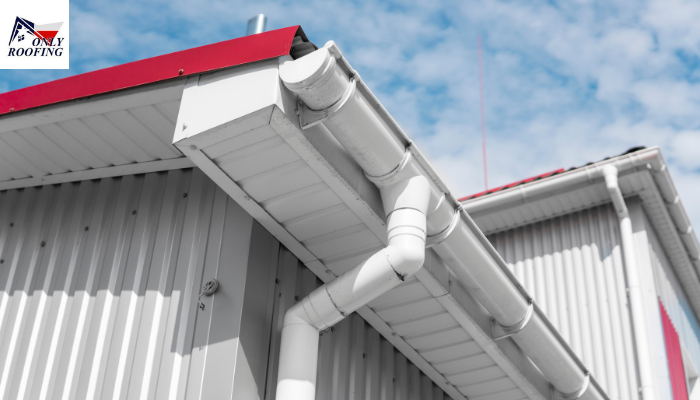Gutters function as a vital protective element for homes. The pipes guide water in different directions away from building foundations and roofs. A cost-effective solution exists for those who require it. The common question among property owners: Can you use PVC pipe as a gutter?
This blog post evaluates the advantages and disadvantages, together with practical techniques for building gutters from PVC pipes.
Why Consider PVC Pipes for Gutters?
PVC pipes provide an inexpensive solution that remains easily attainable in the market. The light plastic composition allows PVC pipes to be easily managed. Many choose PVC pipes as their low-cost alternatives for traditional rain gutters. The advantages of PVC pipes as the preferred gutter material include the following benefits.
- Their cost remains lower than the prices for copper or aluminum gutter materials.
- Setting them up does not require any expert assistance or specialized equipment.
- Its material does not develop rust because it remains free of this deterioration.
- These maintain durability for many years when you properly care for them.
Professional roofing solutions can be obtained. Contact Only Roofing to access their top-quality solutions.
Challenges of Using PVC Pipes as Gutters
Although PVC pipes appear advantageous at first glance, they have several drawbacks. Standard gutter systems have a greater capacity to handle water flow than PVC pipes, which have certain limitations.
- Traditional gutters include multiple drainage openings because they were not created for drainage functions.
- Making PVC pipes the proper shape becomes troublesome due to their complex manipulation.
- The material becomes brittle and prone to cracking when subjected to cold weather and it shrinks during periods of extreme temperature.
- PVC pipes create concerns regarding their professional appearance and neatness compared to standard gutters.
Considering a Roof Replacement? Our company delivers both premium products along expert installation services.
How to Use PVC Pipes for Gutters
If you’re still wanting to test PVC pipes for gutters, make sure you follow these steps to ensure they efficient:
1. Choose the Right Size
Choose pipes with an average diameter of 3-4 inches. This will allow them to hold more water and decrease the risk of overflow.
2. Cut Pipes in Half
The majority of people cut the pipes lengthwise to create an open-gutter shape. Make use of a saw to create smooth cuts.
3. Secure the Pipes Properly
Make use of sturdy brackets to hold the pipes up. They should be evenly spaced across the roof’s edge to stop the pipes from sagging.
4. Add Proper Drainage
Be sure that the water is directed towards a downspout. Attaching PVC extension elbows to redirect water away from your house is possible.
5. Seal the Joints
Use waterproof sealants to stop leaks at the point where pipes join.
If your roof is damaged, look at the Roof Repair Services to help protect your home!
Are PVC Pipe Gutters Worth It?
PVC pipes work well for short-term installations and home improvement projects. PVC pipe gutters provide fewer effective water drainage capabilities than traditional rain gutters. It is advisable to select suitable gutter designs when you reside in a region with high rainfall or extreme weather.
Are you considering installing a new roof? Our long-term roofing installation solutions provide longevity and performance.
Final Thoughts
Can You Use PVC Pipe as a Gutter? – Using PVC pipes as gutters remains a potential option yet proves inadequate for enduring installations. The installation process is simple and these products remain affordable but their quality standards are low and the water flow remains restricted. Hiring professionals for installation will result in both dependable and durable gutter systems.
Need Professional Roofing Help? If you require expert gutters and roof maintenance guidance, call Only Roofing now!

